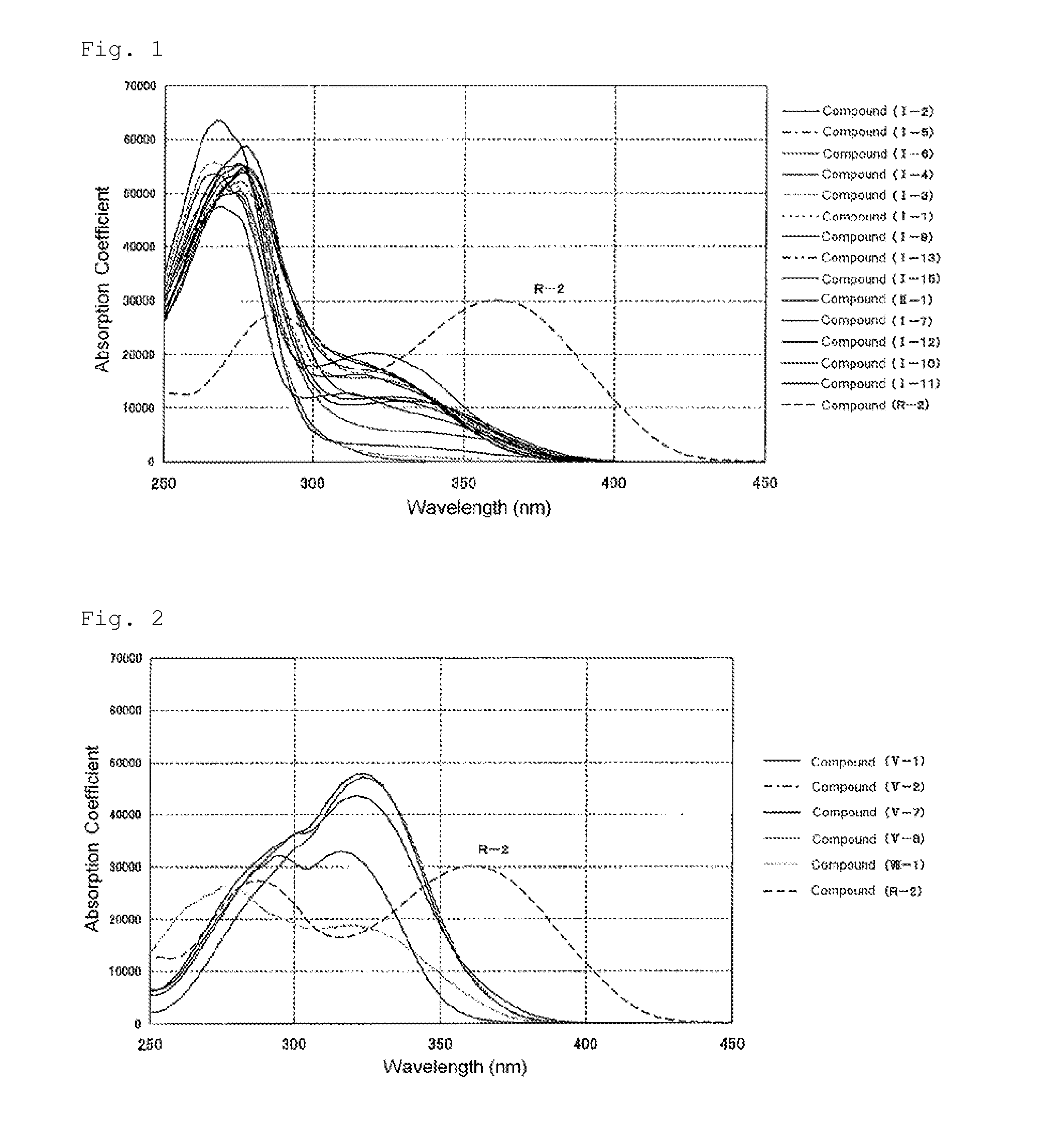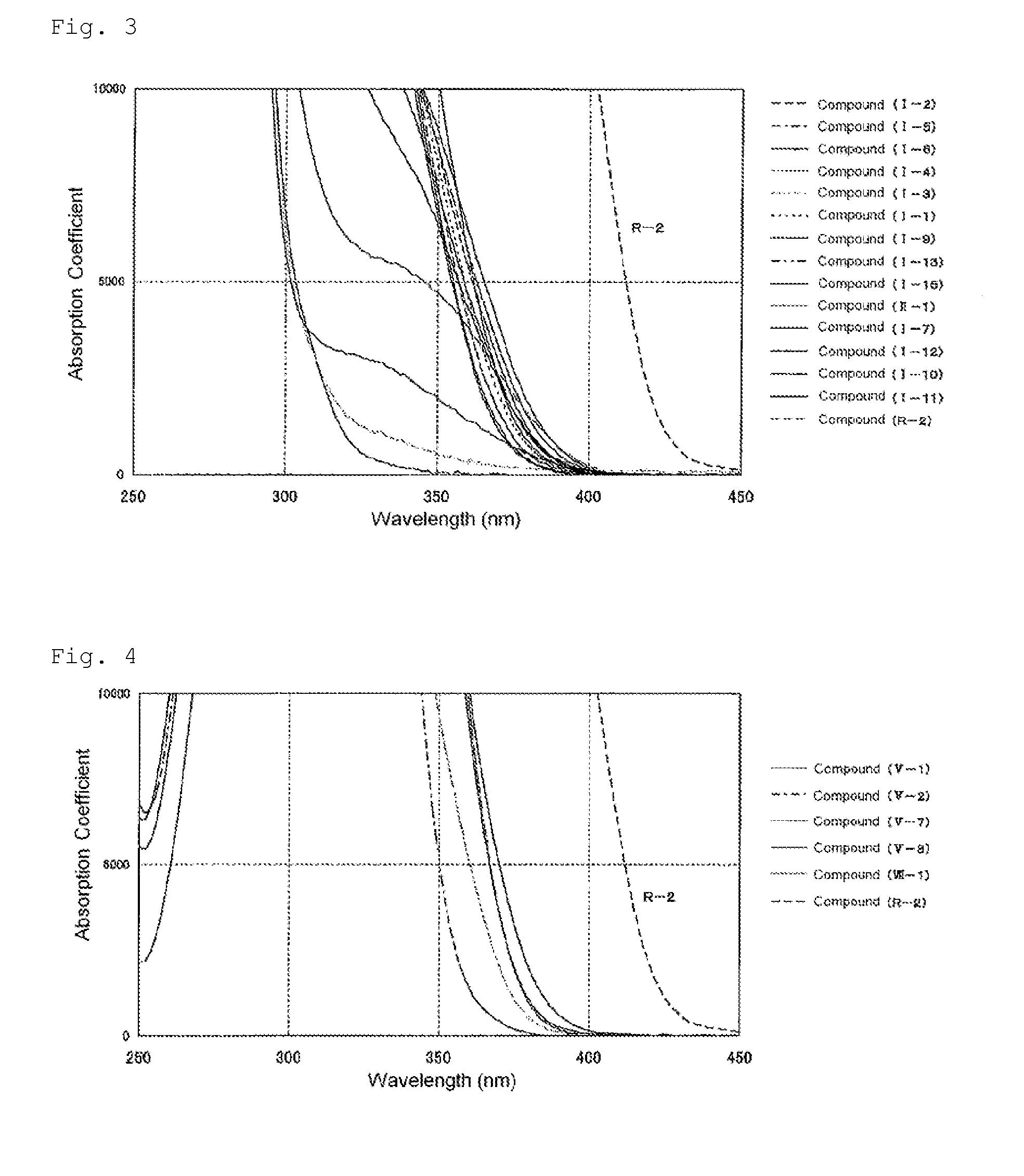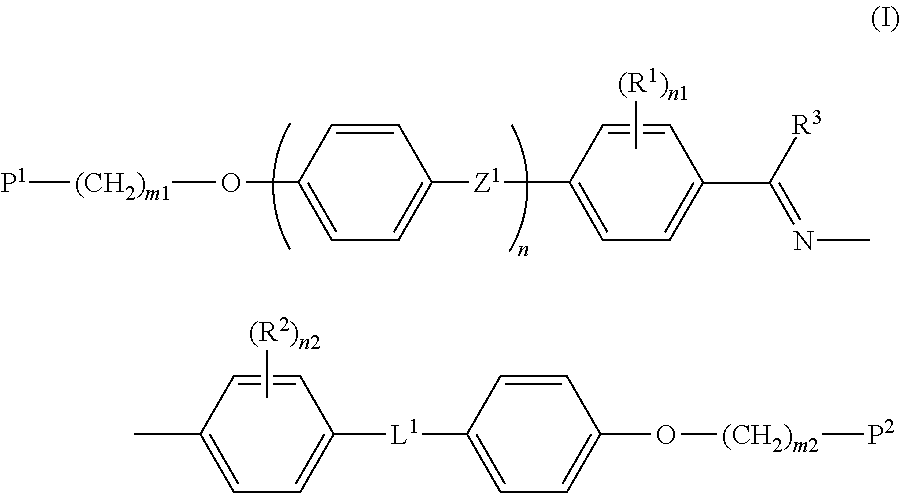Polymerizable compound
a polymerizable compound and compound technology, applied in the preparation of isocyanic acid derivatives, instruments, polarising elements, etc., can solve problems such as color variations of compounds, and achieve the effects of good miscibility, high n, and good solvent solubility
- Summary
- Abstract
- Description
- Claims
- Application Information
AI Technical Summary
Benefits of technology
Problems solved by technology
Method used
Image
Examples
example 1
(1) Example 1
Synthesis of Exemplary Compound (I-2)
[0115]
[0116](1) 7.32 g (60 mmol) of 4-hydroxybenzaldehyde was added to a three-neck flask to which 30 ml of toluene had been added. In a nitrogen atmosphere, the inner temperature was raised up to 40° C., and then 11.3 g (60 mmol) of 4-amino-o-bromophenol was added thereto. Subsequently, this was refluxed for 2 hours, and then water and toluene were completely evaporated away with a Dean Stark apparatus to give a yellow solid. The solid was completely dissolved in 50 ml of THF (this is solution A).
[0117](2) Separately, 10.2 ml (132 mmol) of MsCl and 20 ml of THF were added to a three-neck flask, and immersed in an ice / methanol bath so that the inner temperature was made −5° C. While its inner temperature was kept at 5° C. or lower, a mixed solution of 4-acryloyloxybenzoic acid 31.7 g (120 mmol) / diisopropylethylamine (hereinafter referred to as DIPEA), 26.1 ml (150 mmol) / 2,6-di-t-butyl-4-methylphenol (0.30 g) / THF (70 ml) was dropwise ...
example 2
(2) Example 2
Synthesis of Exemplary Compound (I-5)
[0119]
[0120]This was synthesized according to the same method as in Example 1 except that 4-amino-m-cresol was used in place of 4-amino-o-bromophenol. The yield was 28.9 g (67%).
[0121]1H-NMR (CDCl3): δ=1.8-2.0 (brs, 8H), 2.4 (s, 3H), 4.0-4.1 (m, 4H), 4.2-4.3 (m, 4H), 5.8 (d, 2H), 6.2 (dd, 2H), 6.4 (d, 2H), 6.9-7.1 (d, 7H), 7.3-7.4 (d, 2H), 8.0 (d, 2H), 8.1 (m, 4H), 8.4 (s, 1H).
example 3
(3) Example 3
Synthesis of Exemplary Compound (I-6)
[0122]
[0123]This was synthesized according to the same method as in Example 1 except that 4-amino-3-chlorophenol was used in place of 4-amino-o-bromophenol. The yield was 26.6 g (60%).
[0124]1H-NMR (CDCl3): δ=1.8-2.0 (brs, 8H), 4.0-4.2 (brs, 4H), 4.2-4.3 (brs, 4H), 5.8 (d, 2H), 6.1 (dd, 2H), 6.4 (d, 2H), 7.0 (d, 4H), 7.1 (d, 1H), 7.2 (d, 1H), 7.3 (m, 3H), 8.0 (d, 2H), 8.1 (d×2, 4H), 8.4 (s, 1H).
PUM
| Property | Measurement | Unit |
|---|---|---|
| transition temperature | aaaaa | aaaaa |
| tile angle | aaaaa | aaaaa |
| temperature | aaaaa | aaaaa |
Abstract
Description
Claims
Application Information
 Login to View More
Login to View More - R&D
- Intellectual Property
- Life Sciences
- Materials
- Tech Scout
- Unparalleled Data Quality
- Higher Quality Content
- 60% Fewer Hallucinations
Browse by: Latest US Patents, China's latest patents, Technical Efficacy Thesaurus, Application Domain, Technology Topic, Popular Technical Reports.
© 2025 PatSnap. All rights reserved.Legal|Privacy policy|Modern Slavery Act Transparency Statement|Sitemap|About US| Contact US: help@patsnap.com



